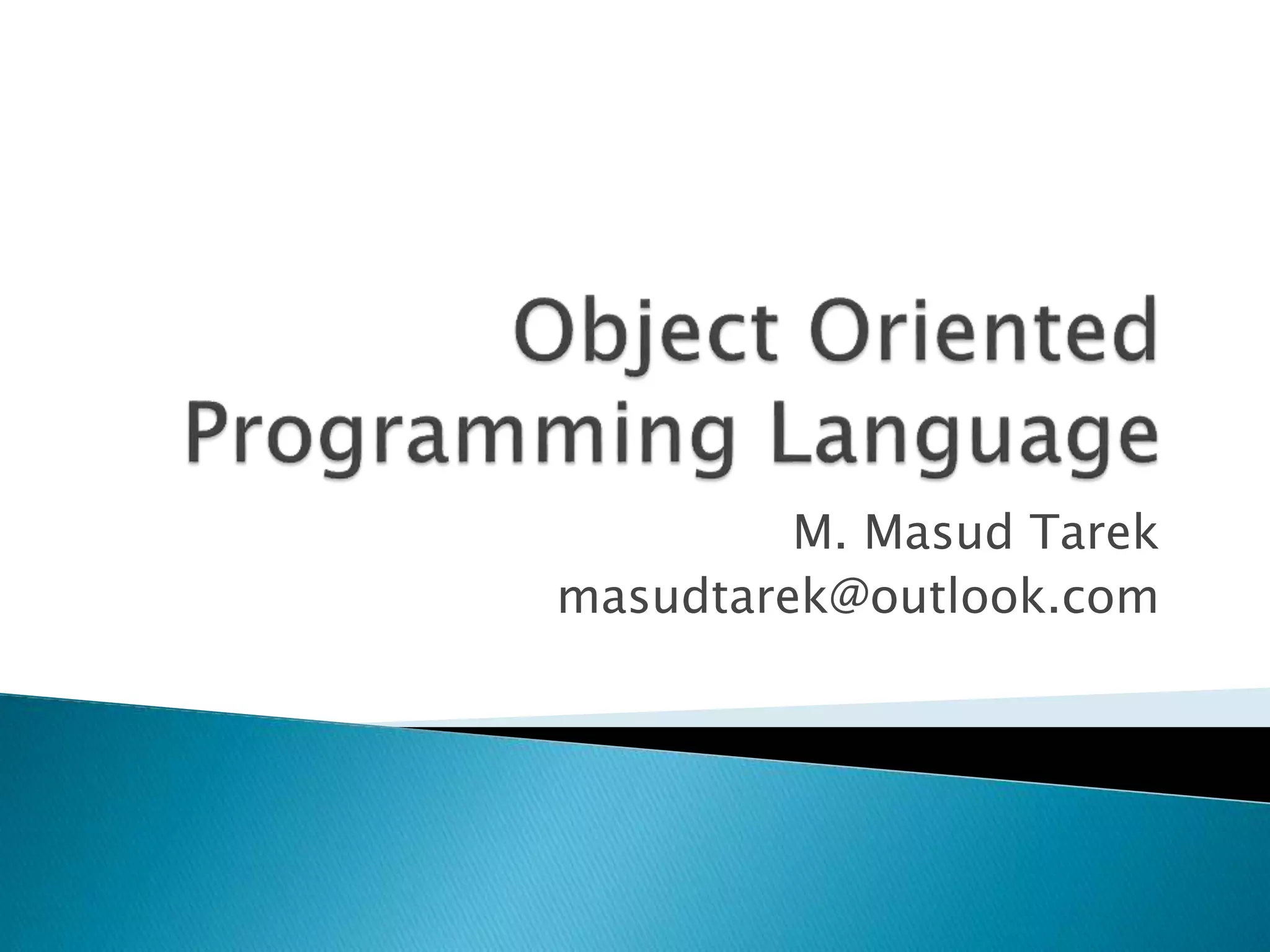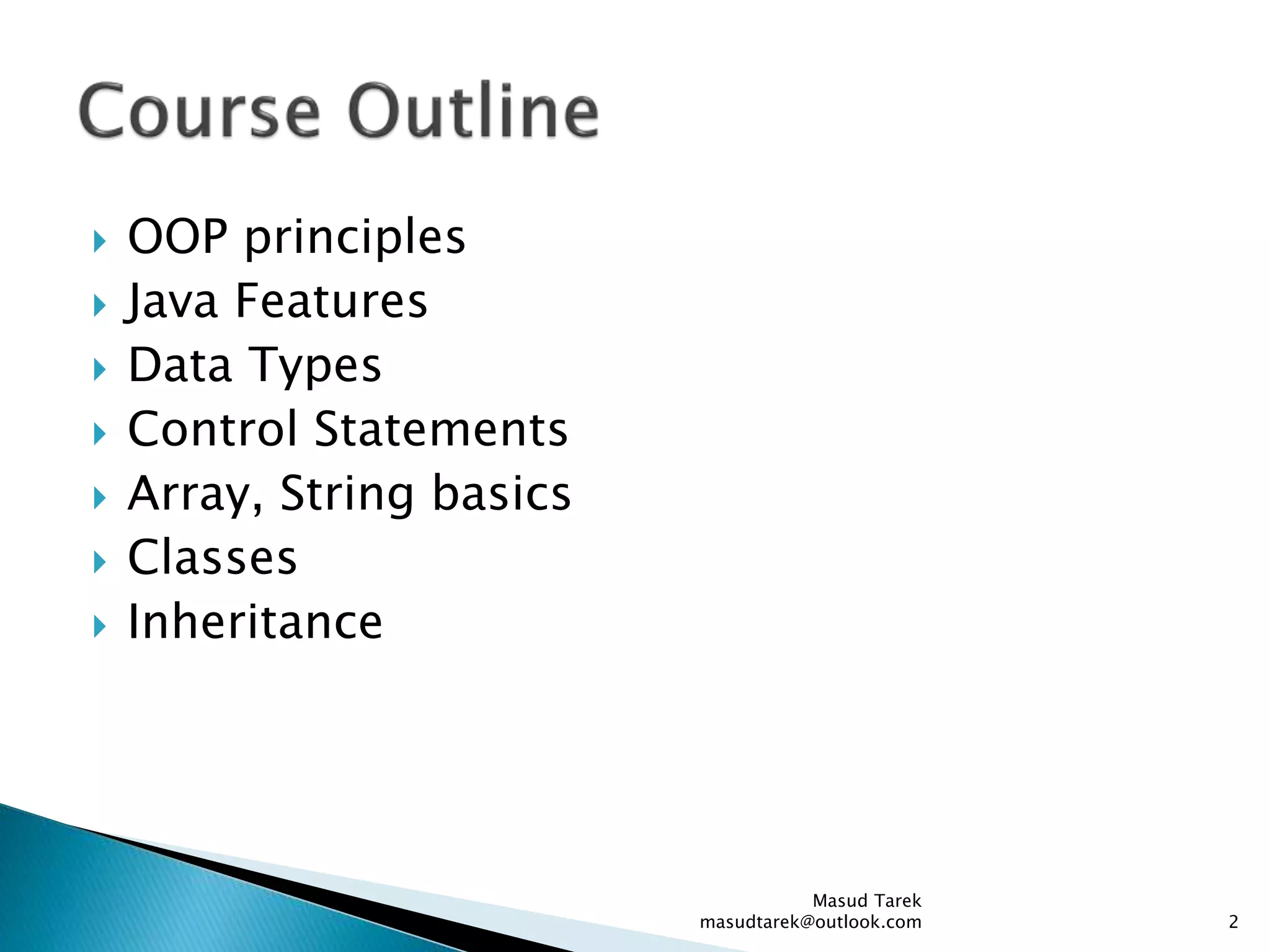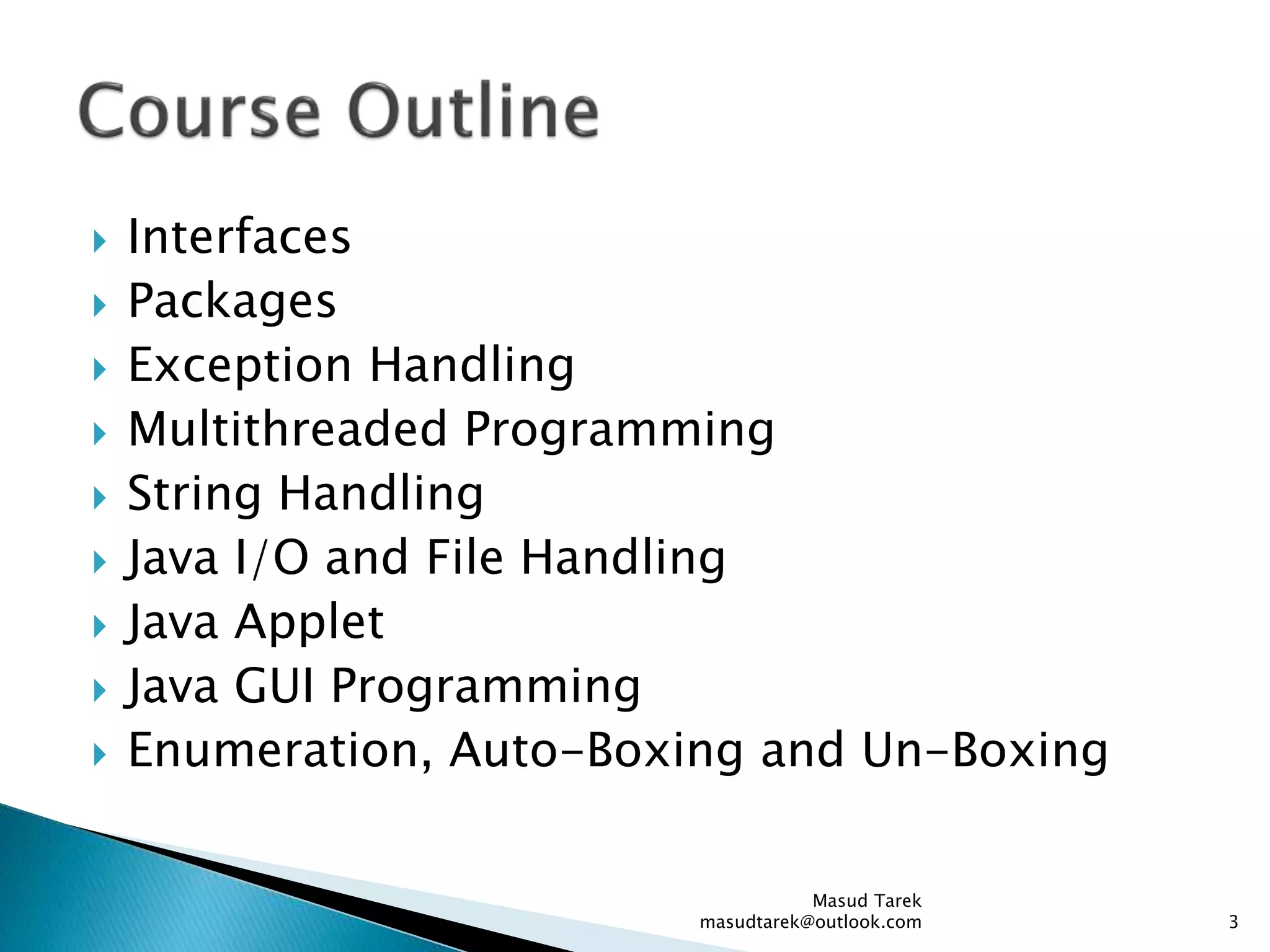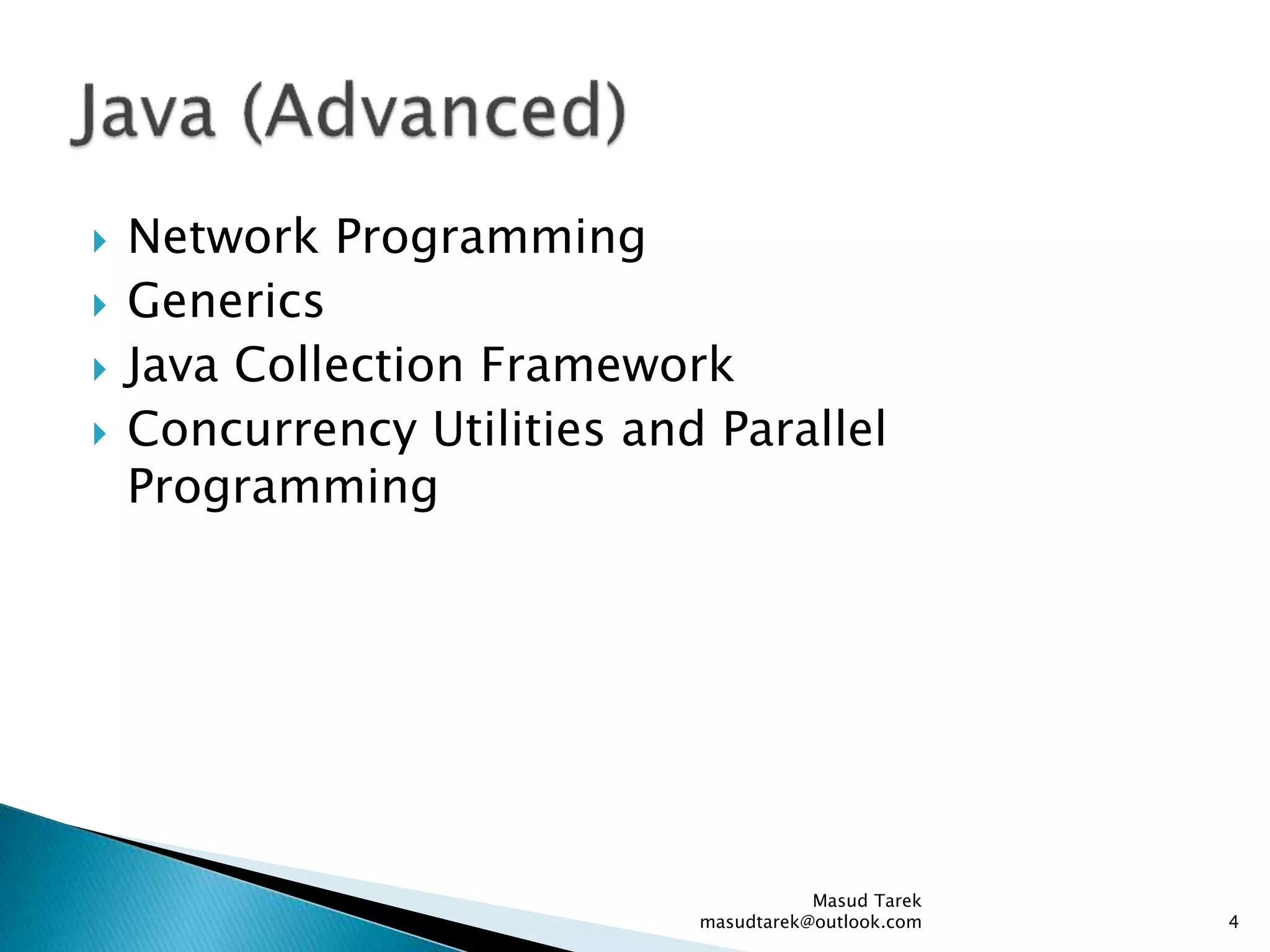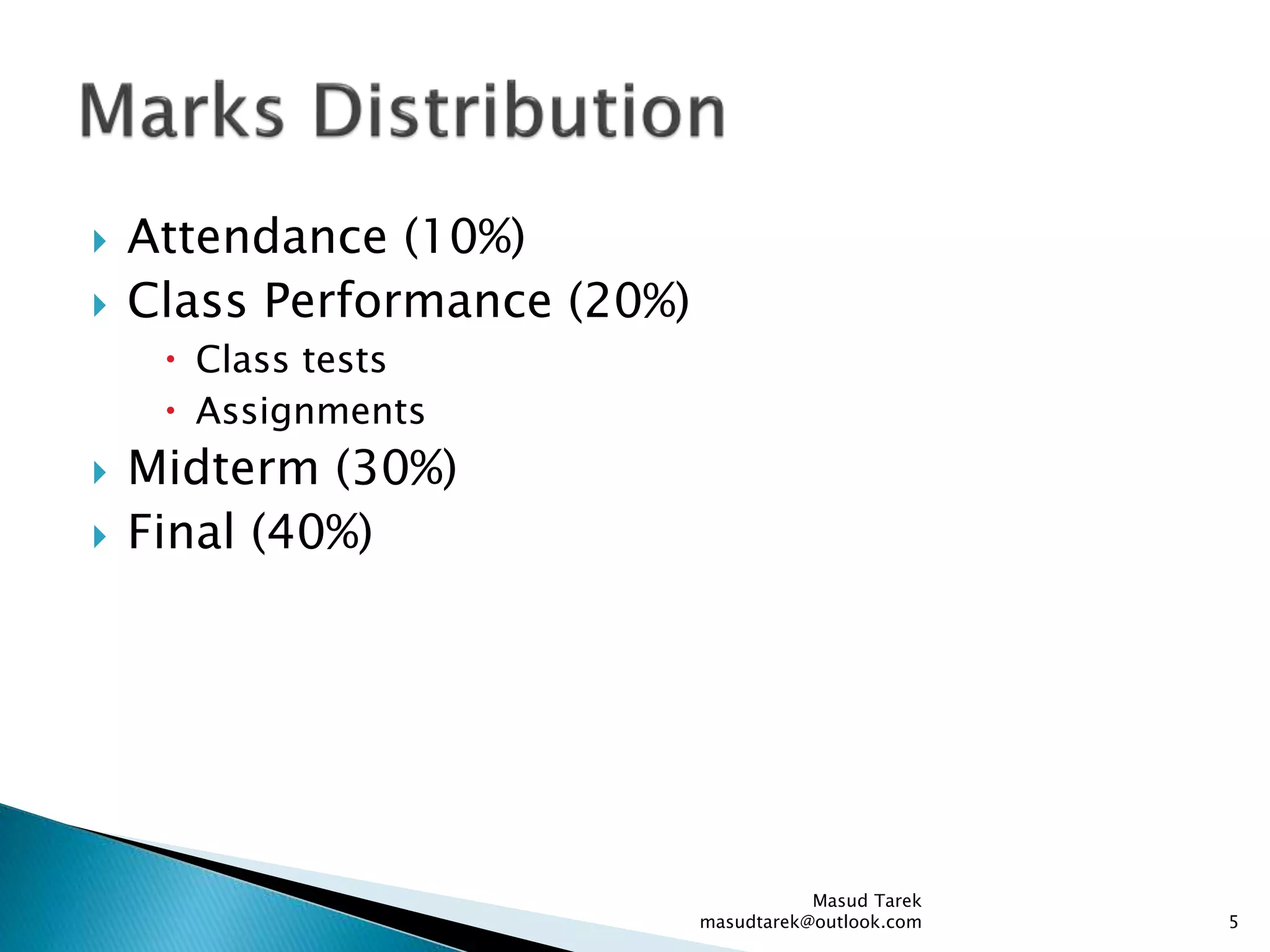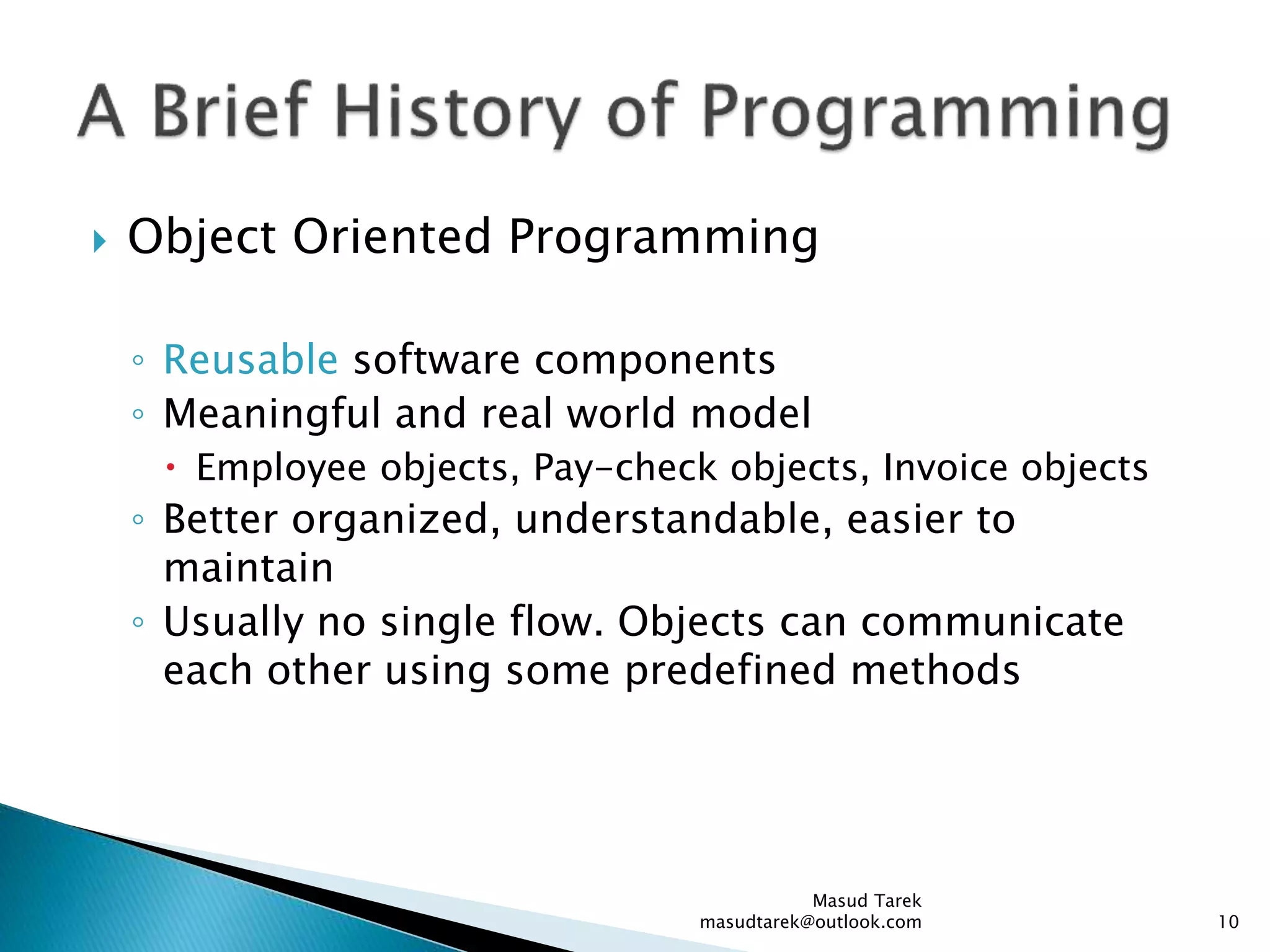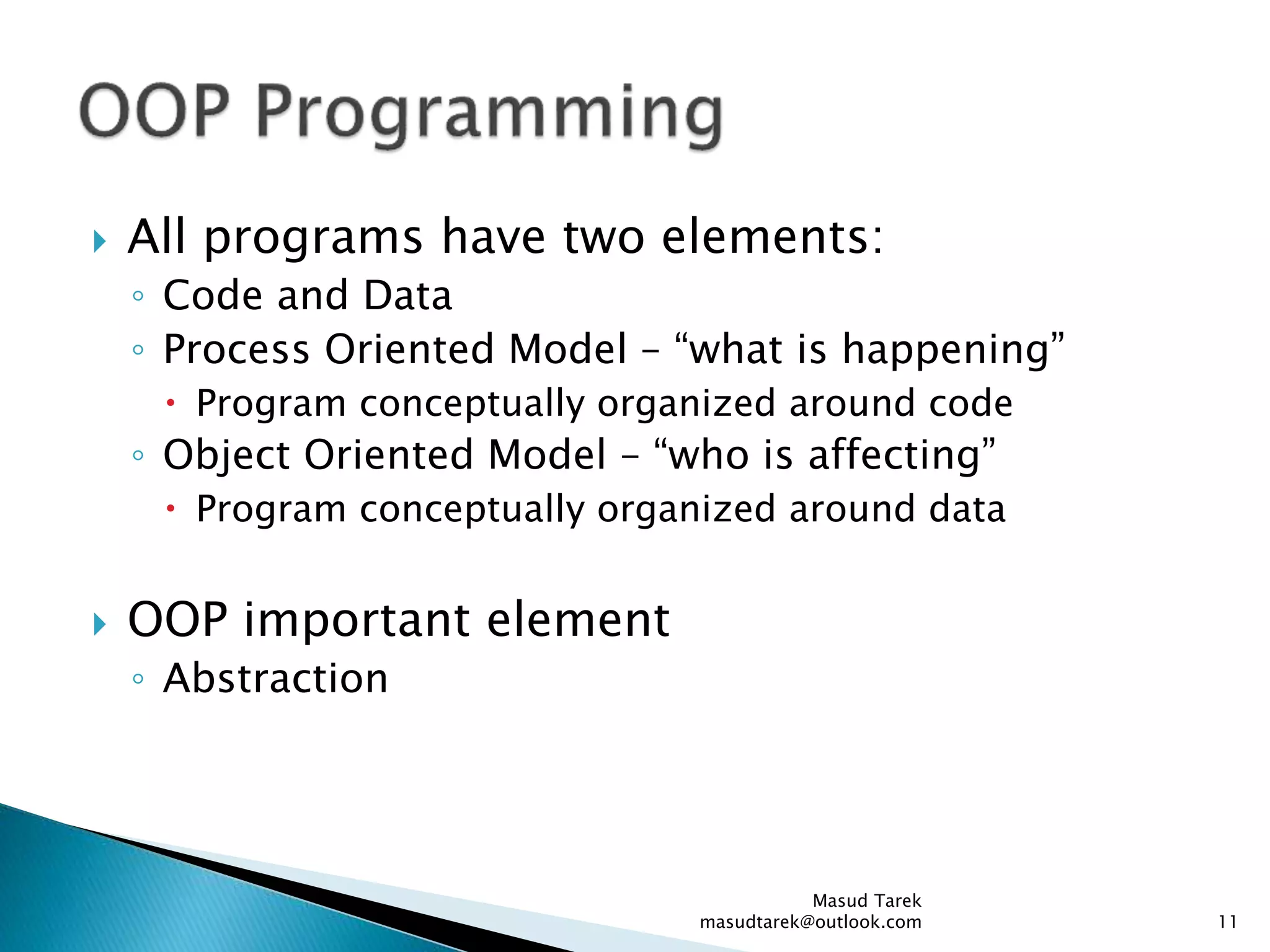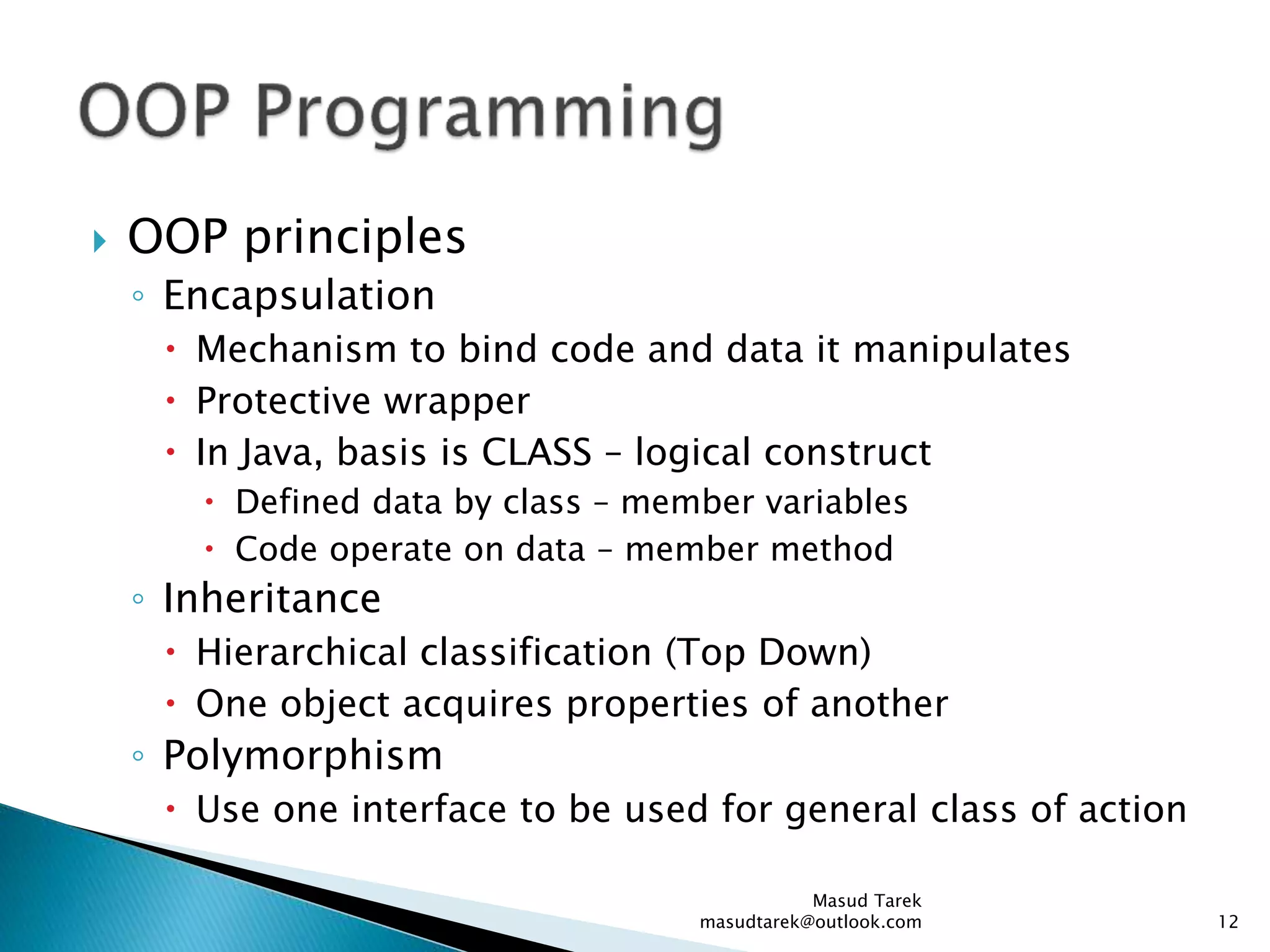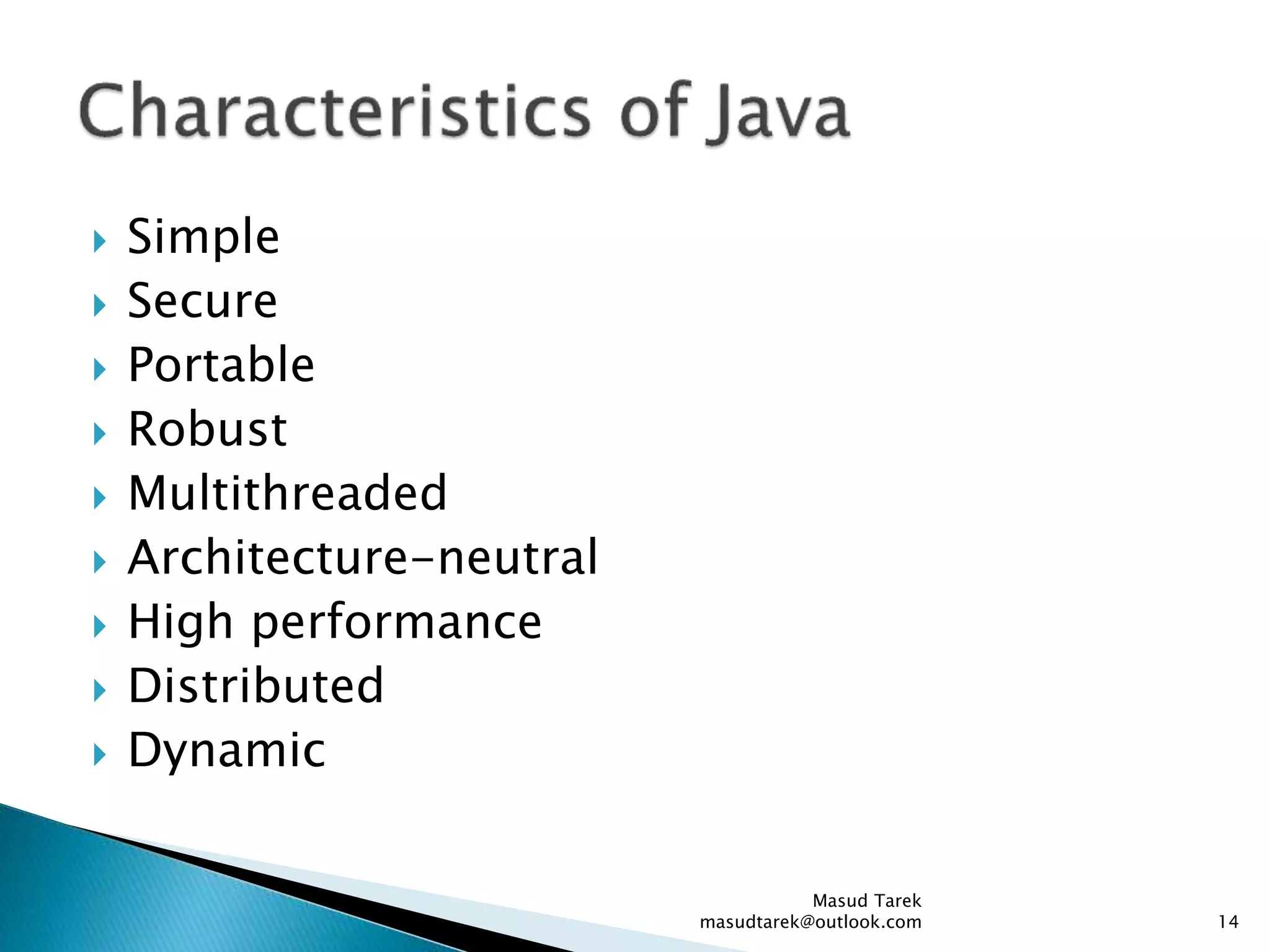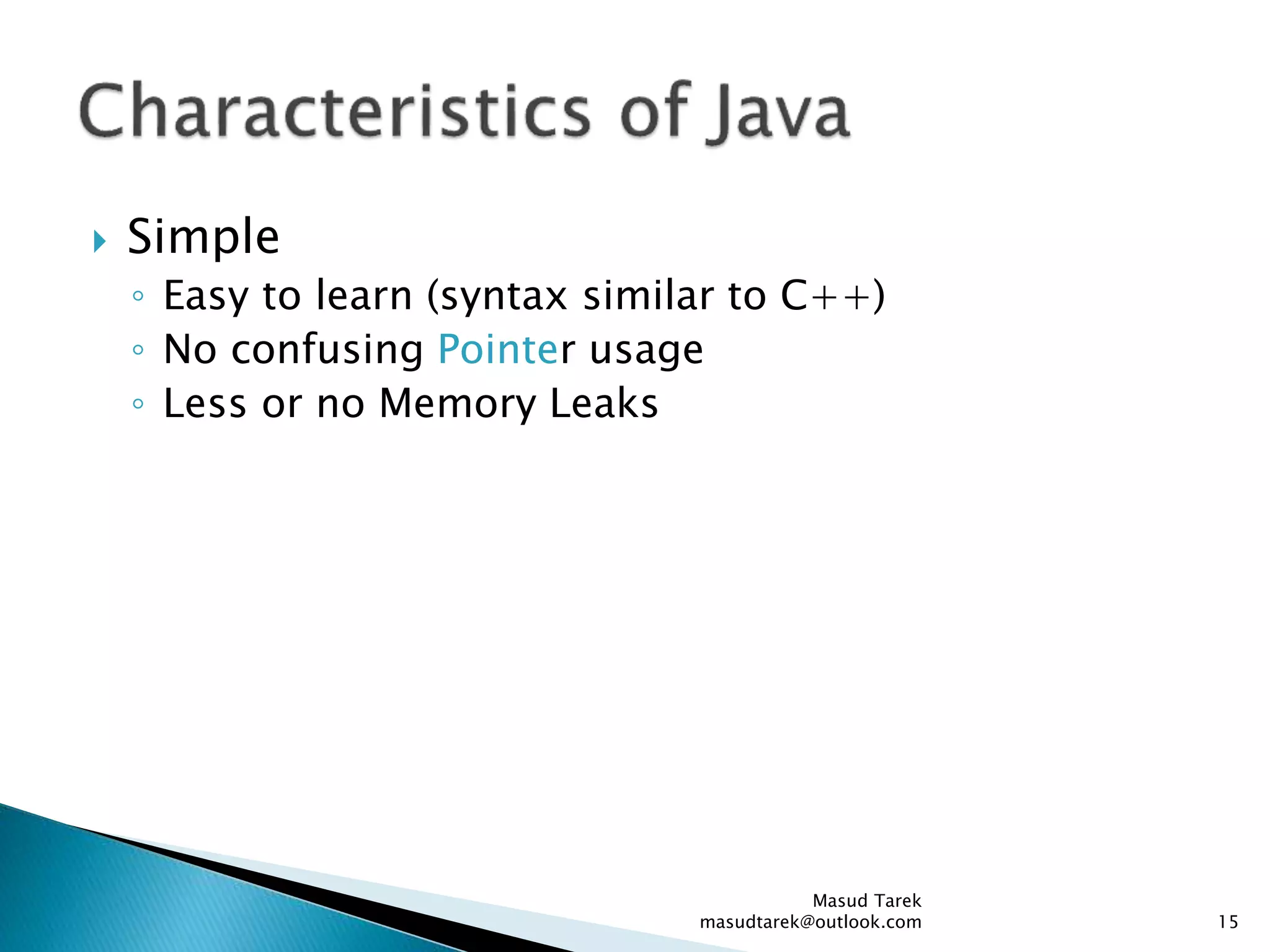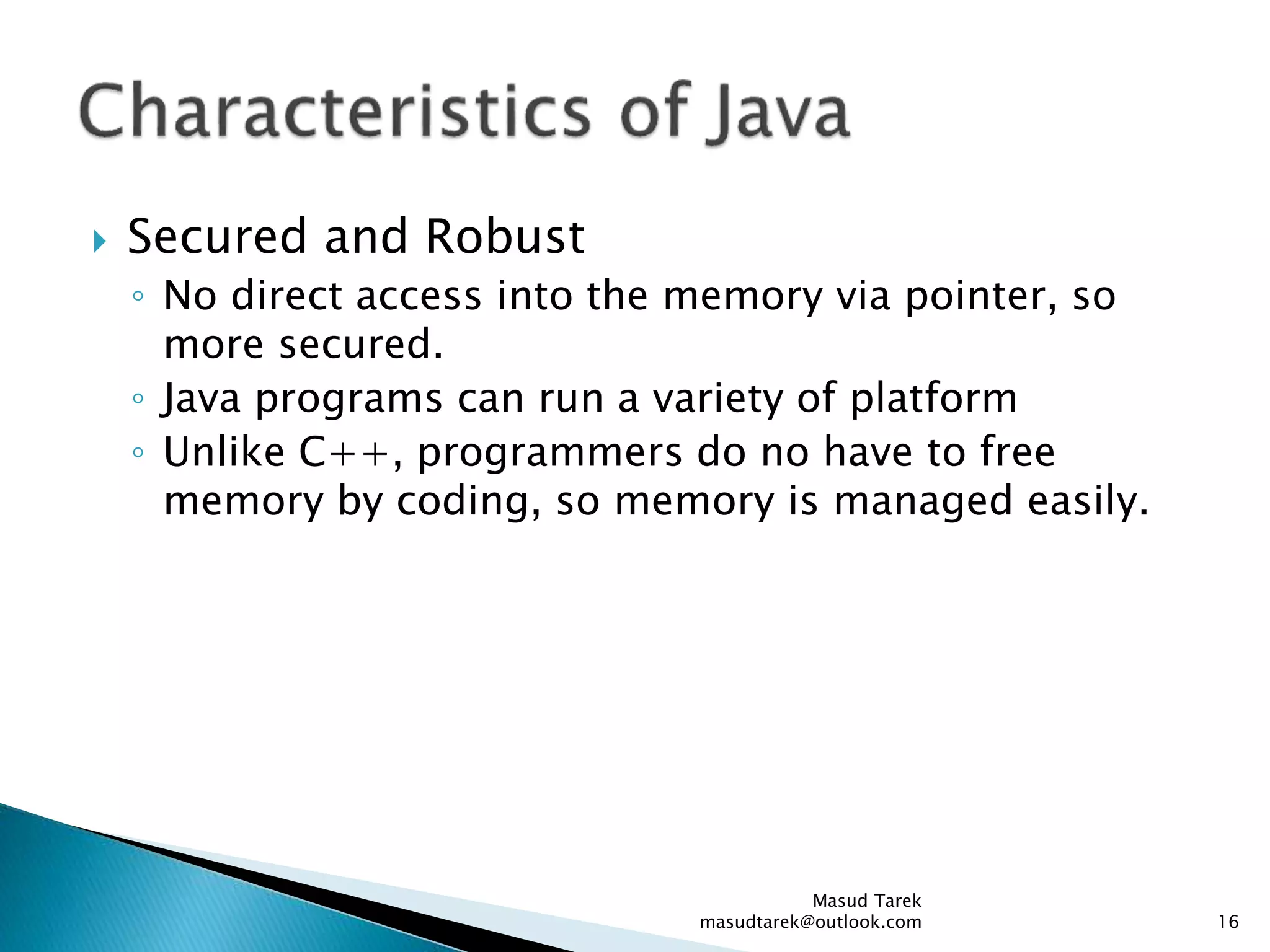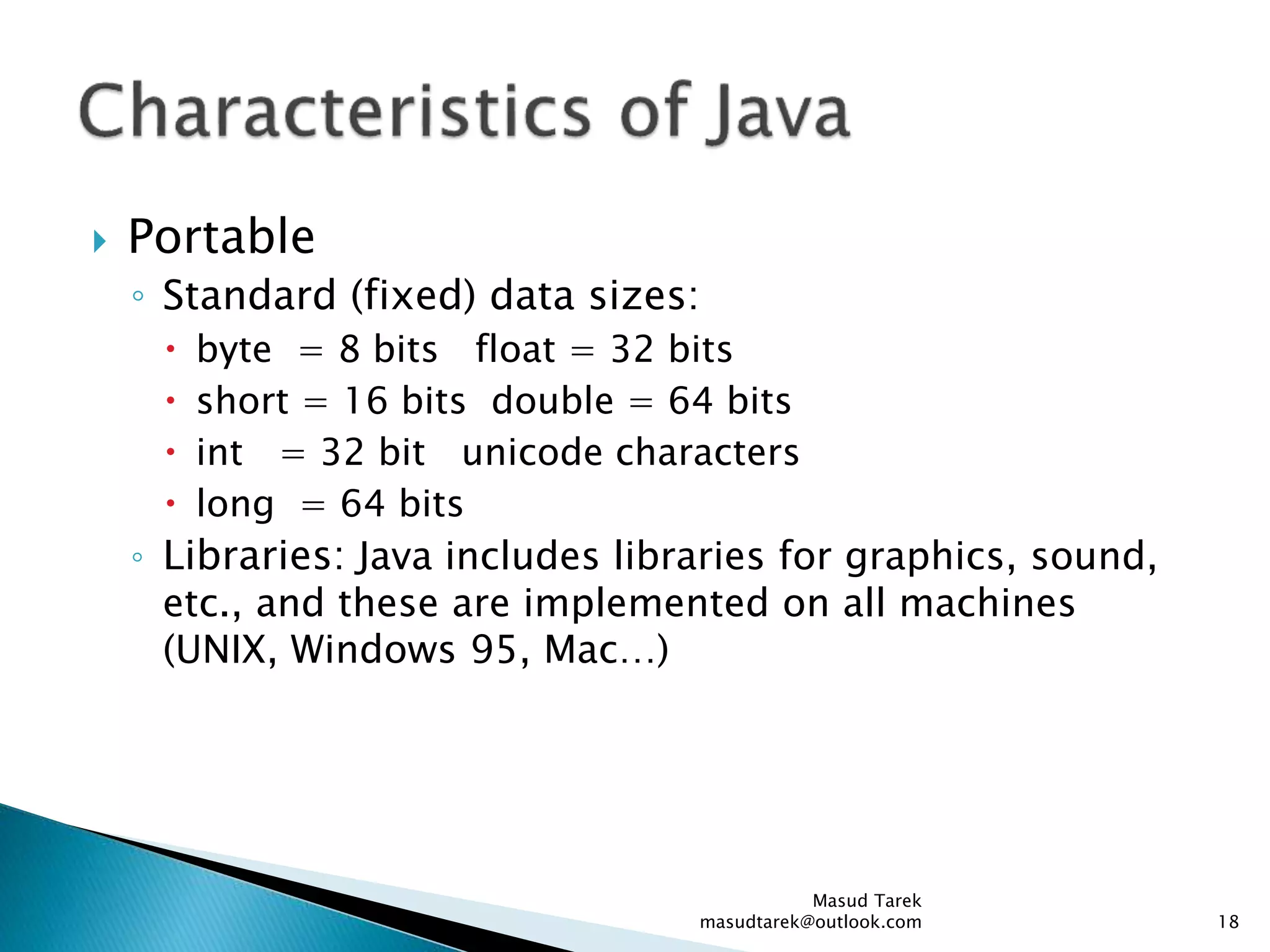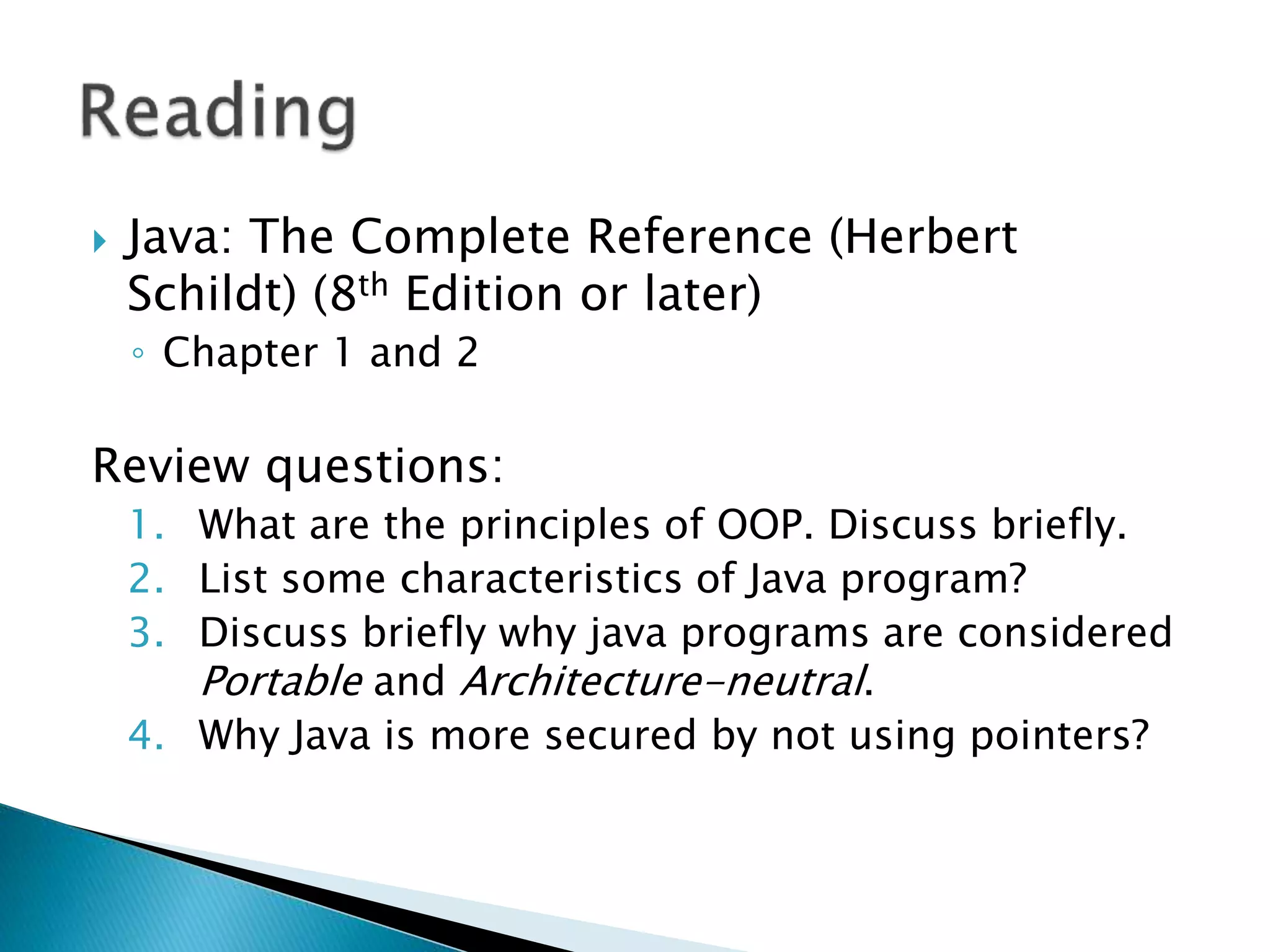The document discusses the principles of object-oriented programming including encapsulation, inheritance, and polymorphism and describes Java as an object-oriented language that is simple, secure, portable, robust, and high-performance due to features like automatic memory management, cross-platform portability, and just-in-time compilation to native machine code. It also provides an overview of topics that will be covered in a Java programming course including data types, control statements, classes, interfaces, exceptions, and more.
